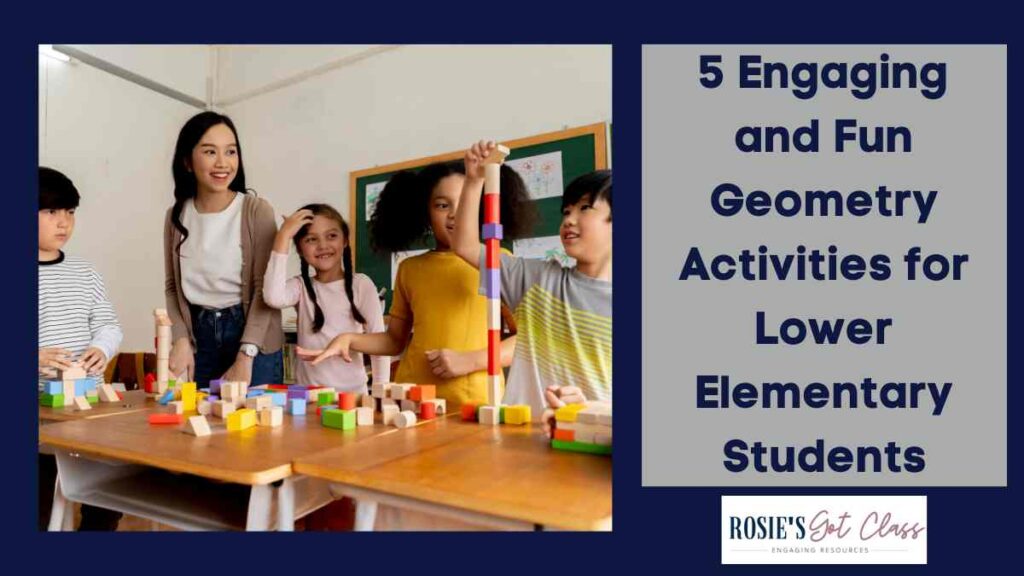
Geometry activities make learning about shapes fun and exciting. Although it may seem that geometry is not as important as other math standards such as addition or subtraction, it helps students understand their world. They need many opportunities to dig deeply into the concepts of geometry. While they are in the lower elementary years, multiple experiences can prepare them for more complex concepts in the upper grades. They also help students build their math vocabulary. The best part of this is that these activities can be hands-on and fun.
If you are looking for more hands-on activities, measurement is another math activity for your class to try! These measurement activities are easy to prep, and your students will be excited to try them. Measuring is a practical skill that is hands-on and engaging. If you would like three FREE measurement activities, type your name and email in the correct boxes. Then check your email for your measurement activities.
Geometry can be a source of endless fun! These activities can help deepen your students’ understanding of geometry. They also serve to give them a variety of experiences to prepare them for more complex concepts as they advance in their mathematical understanding. Here are five engaging geometry activities that are designed to make geometry fun and enjoyable.
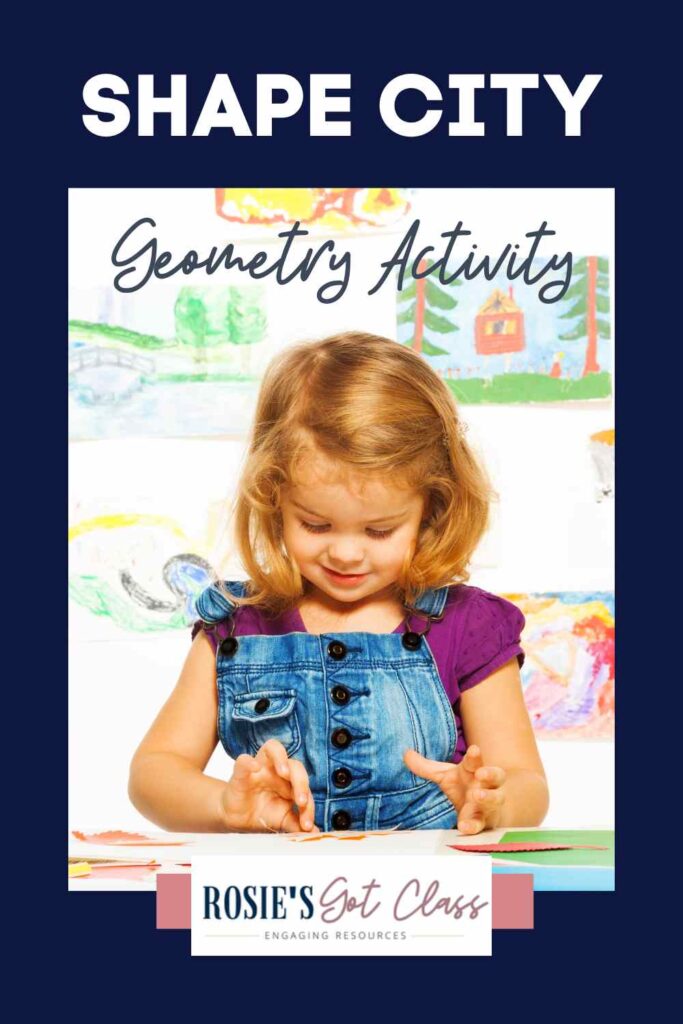
Shape City Collaborative Classroom Activity
This is a fun geometry activity because it allows students to use shapes while being creative. Give each student a square or rectangle. They need to use a variety of shapes to design a house. You could also give fast finishers an additional square and let them design another building that belongs in a city. When everyone is finished, put the house together to build the city. Everyone loves this activity, and I love seeing their imaginations run wild. I believe our students need to have more opportunities to be creative, but I will save that discussion for another day.
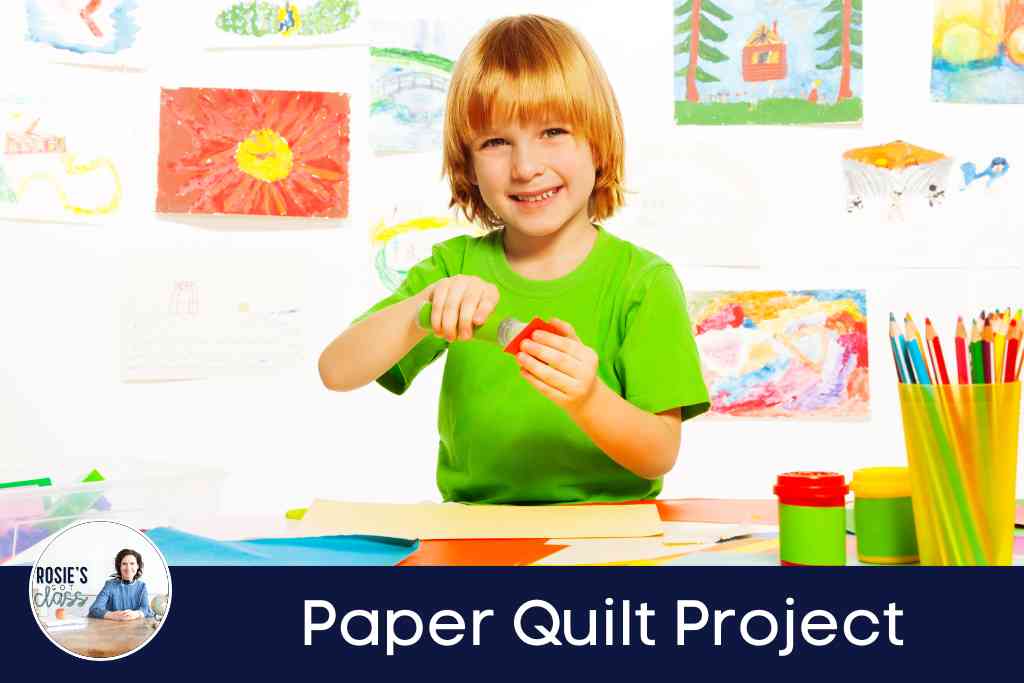
Quilt Collaborative Geometry Activity
This is a great activity to do at the end of the year. Give students a square piece of paper. Then get out the pattern blocks. They will use the pattern blocks to make a quilt design on their quilt block. After they are satisfied with their design, they will use paper pattern blocks to repeat the design and then glue it on the paper. Put all of the designs together, and you have a collaborative quilt. Sometimes I have glued all of the blocks on a large piece of butcher paper. Other times I have stapled them next to each other on the bulletin board to make it look like a quilt. Honestly, it is really about how much time I have!

Shape Hunt
This is a simple activity because it takes no preparation except getting your students excited. To build excitement, I have my students put on their imaginary detective hats. Then we begin looking for shapes around our classroom. It is easy to find a rectangle if you have a door and a white board. They love finding geometry examples within their own classroom, and these are real life items that they are looking at every single day.
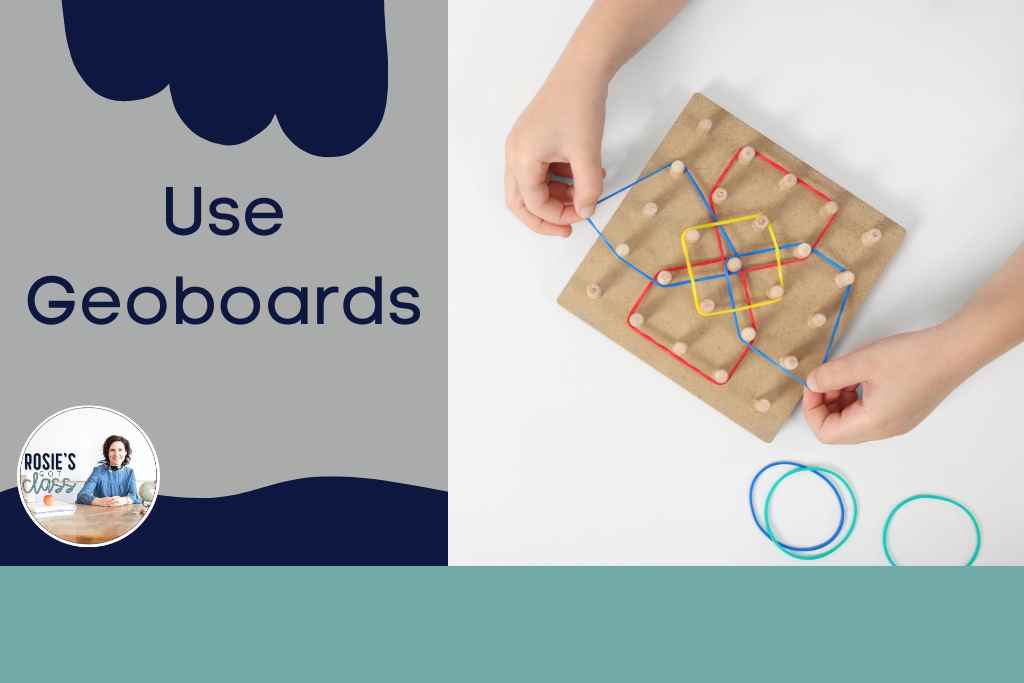
Use Geoboards
Rubber bands stretched to make shapes on geoboards are always engaging for students. It is also good to help them build their fine motor skills. I know that some teachers may shy away from using rubber bands, but my classes have always been good about them. They know that if the rubber band becomes a toy instead of a tool for math, they will lose the opportunity to use them. This is usually enough motivation for them.
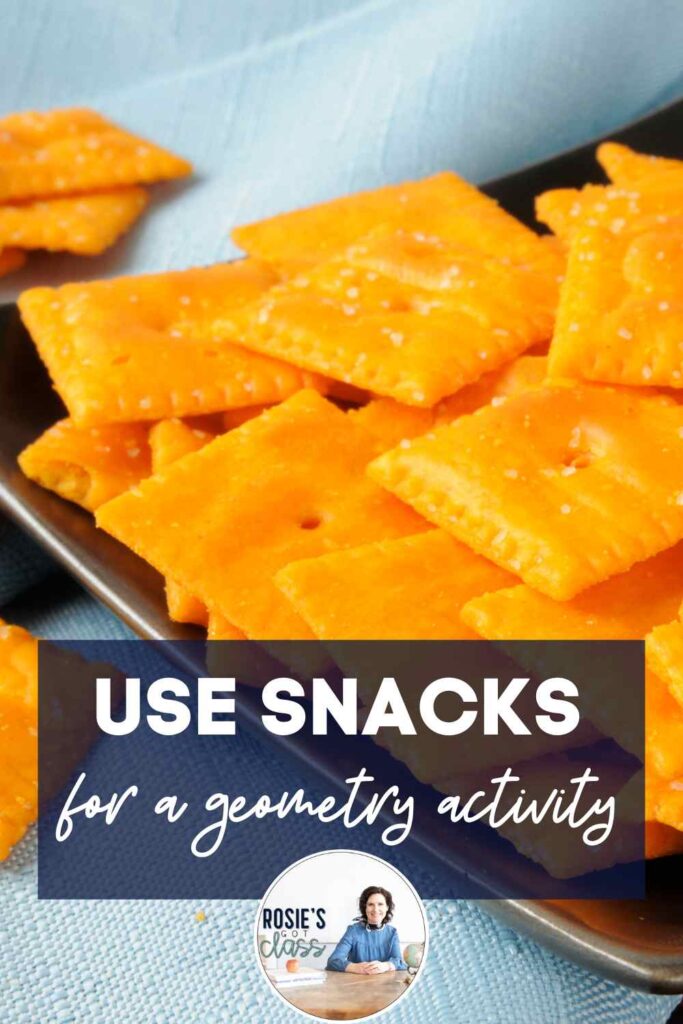
Use Snacks
You can use simple snacks to do a shape sort. Practice finding squares with crackers, triangles with tortilla chips, and circles with round pieces of cereal. Go to the grocery store and do your own shape hunt to find snacks that will work for this activity and your budget. If food is not an option for you, you can do the same thing with pattern blocks.
First, put a variety of snacks or pattern blocks in a plastic bag. Then have students sort them. You could also graph your findings if you would like to deepen the understanding with other standards for your students.
Geometry activities are easily made into hands-on activities. You will love them because they are also fun to teach. Your students will love them because they are more engaging than a worksheet. Use these geometry activities to help your students deepen their understanding and prepare them for more complex math concepts. These activities will also help them build their math vocabulary. Try these math activities the next time you teach geometry.
Here are some other articles that you may find helpful.


